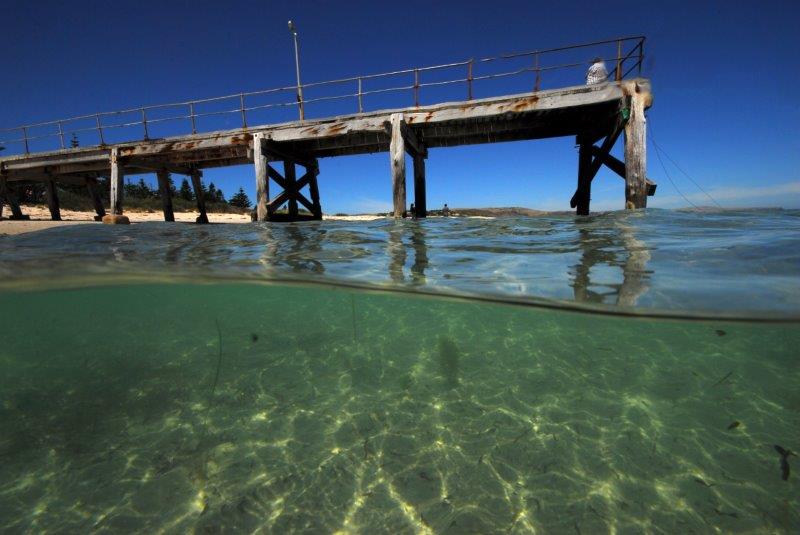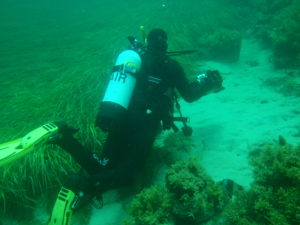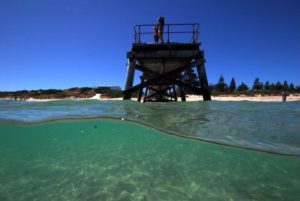When David Muirhead sent some wide-angle photos 1/2 above water and 1/2 below water to Scoresby Shepherd (incl. the above image), he received this response from him: –
“I’ve always been enchanted by these strange pics – 1/2 above water and 1/2 below. I’ve no idea what sort of lens can do it!”
David Muirhead diving with camera in hand
(Taken by Steve Reynolds)
David sent Scoresby the following explanation: –
“For in- water use you need a combination of a largish dome port on whatever housing you are using, together with any decent wide angle lens (every major camera business has versions which fit their brand or models e.g. Nikon, Canon, etc…)
And by decent, I mean as wide an angle lens as possible.
Most are 10 degrees these days (a few are even wider, say 7 or 8 degrees!), which was unheard of even twenty years ago, but optical advances have been very rapid and you can now buy a 360-degree camera for under $1000!! (Alan Noble showed us one at last week’s (Feb) mlssa meeting).
The lens I use is a 10 degree one (vs my more usual 60-degree macro photos lens, ideal for small critters and with all lenses except fully wide angle ones, flat ports are fine (and much cheaper than dome ports! Also, lighter to carry across rocks or soft sandy beaches).
When using my 10-degree wide angle lens, I must remove the housing’s flat port and fit my big dome port, which is made of top quality optical glass and itself cost (when purchased new) as much as the entire rest of the housing plus the flat port that comes as standard gear on the basic housing.
The outer end of Normanville jetty
(as seen from the surface of the water)
(Taken by David Muirhead)
My dome port (which was among the very best available at time of purchase) cost me about $3,500 when I got it new about five years ago!!!
I handle it with great care!
The dome port allows the wide-angle lens full peripheral views better than any flat port, and is actually essential to minimise the distortion you always get with pictures taken wide angle but through a flat port.
Dome ports also let more light into the camera lens by acting like a magnifying glass.
Finally, really high quality dome ports have special anti-droplet-forming coatings (some miraculous substance like Teflon or etc… but I’m now out of my depth!) which helps most of the water droplets quickly run off the glass (droplets that would otherwise, via surface tension, remain as little blobs all over the external surface of the dome’s glass from the moment the lens port gets wet. And then the droplets, which obviously are only present on upper half of dome port when one’s taking half in half out type pictures, would cause multiple refractory distortions in the top i.e. above surface component of the image, which basically renders such images useless).
Hope you enjoyed my very brief explanation!”



